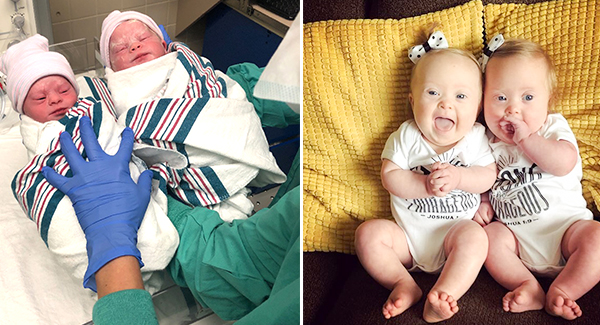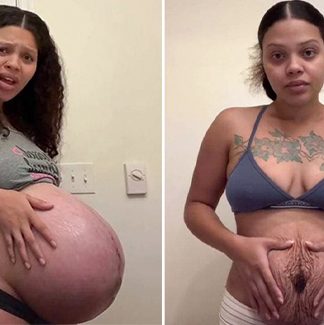Rachael Prescott, 39, of Monmouth, Oregon, said that even after the sisters, Charlotte and Annette, who are now one, were born, she continued to receive condolences and words of caution to be ready for health issues when learning they might be unwell. a hereditary disorder. Just months after she got pregnant, Rachel and her 32-year-old husband Cody were informed that their twins would probably require open-heart surgery soon after birth due to a congenital cardiac issue. regarding down syndrome.


but parents who stay at home They are eager to see their newborns, who were diagnosed with Don’s syndrome at birth, Easton, 6, Hudson, 4, and intern pilot Cody. Since having an identical twin with DS is a once-in-a-lifetime opportunity, Rachael refers to his twins as a “miracle.” Six doctors took turns performing the scans during my first pregnancy appointment at around eight weeks, and they all produced the same results, according to Rachael. Baffled by their concerns that our girls might have Together syndrome when they clearly had a significant heart issue, we sat down to discuss their similar viewpoints.
The demand for genetic testing and potential abortion procedures has resulted in a lack of information on managing their heart disease. I wanted to talk about how much I wanted the pregnancy to stop, but I was too speechless at the time. Rachael claimed that even after underlining her joy at the prospect of welcoming two new family members, doctors persisted in expressing concern until her twins were born. that they might have DS from birth. Six different doctors recommended that Rachael and Cody undergo additional testing to determine whether the girls had DS before giving birth, but they turned it down, saying they weren’t interested in the results.


Annette was born without a cardiac abnormality, unlike Charlotte, who had open heart surgery six months after her birth. We had a better grasp of congenital heart disease, and when they were delivered, we rejoiced to learn that down syndrome was indeed the verified diagnosis. Doctors frequently advise cesarean sections since they can be risky, but a natural birth has been made possible, so the infant doesn’t need to be taken straight to the operating room. We are incredibly appreciative and happy. However, those around us were hesitant to bring up the subject of down syndrome.
We were eager to discover more about down syndrome after the birth of our daughter. But during my long practice sessions, I read book after book about the Don syndrome, and I felt more depressed to discover that I was surrounded by unfavorable counsel regarding grieving, the burden of family and friends, as well as any medical complications that might arise.


I am aware that glaucoma patients’ human rights are still in their infancy in our quickly changing culture, thus it is best for medical practitioners to dispel societal misconceptions about the disorder, which manifests negatively for the parents. Rachael is now speaking out, urging parents and medical professionals to take their children’s conditions into consideration and accept them as they are. Despite the fact that Annette and Charlotte are smaller than usual and grow a bit slower, in many ways they are no different than one-year-olds.
They had begun the typical sisterhood of fighting over toys and small cups, but entwined in the same cot every night in full love. We hope in the future, to steer future parents away from false stereotypes and towards what we have found to fill us with joy. The crazʏ love we have for our girls overcomes any emotional stress stemming from their medical needs. Without a doubt, I still choose my children as they are. ‘














